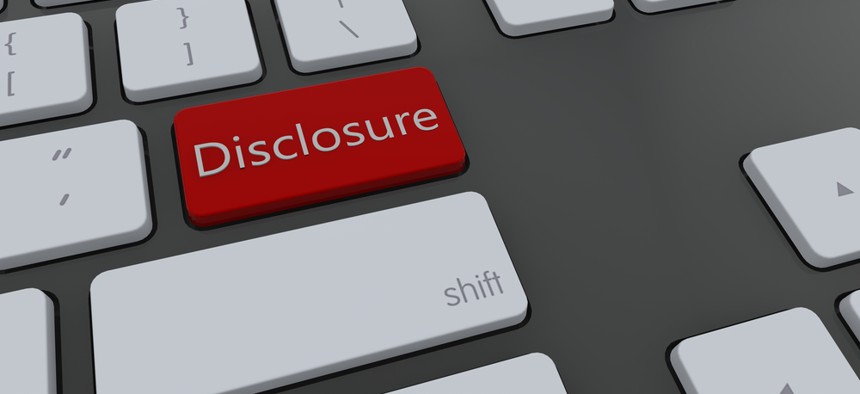
Image via Tudor Catalin Gheorghe/Shutterstock.com
Better Decisions Through Smart Disclosure
The benefits of opening data stores to consumers.
A review of the report from the National Science and Technolgy Council, "Smart Disclosure and Consumer Decision Making: Report of the Task Force on Smart Disclosure"
Access to data has been WD40 to the wheels of the US economy.
Companies like Facebook and Google derive their value from the data they collect and analyze. Manufacturers and retailers are able to optimize and streamline their operations becuase of the data they have at their disposal. And of course, consumers are able to make the best choices--not only for electronics and household staples, but also for education, health care, and financial services--becuase of the data they can easily access and visualize online.
But where does all that data come from? How can consumers and businesses trust the data's veracity? Who is promulgating the standards that ensures (or at least encourages) interoperability of the data, and its ability to be manipulated easily by competing or complimentary applications?
A new report by the National Science and Technolgy Council, "Smart Disclosure and Consumer Decision Making: Report of the Task Force on Smart Disclosure," outlines the benefits of opening data stores ("Smart Disclosure") to consumers and then details the actions various government agencies have been undertaking to realize those benefits.
What is being disclosed
The report breaks "data" into four categories based on what the data is about and who makes it available: data about individuals that the government makes available, data about individuals that the private sector makes available, data about government products or services, and data about private sector products or services.
Understandably, the administration has much greater influence over the rules that pertain to its own data, and especially over the data of its products and services, than over any data generated by and used for the private sector.
The distributed benefits of disclosure
The report details the benefits of smart disclosure as "Promoting Consumer Choice," "Empowering consumers with their own personal data," "New data-driven service," and "Broader economic impact." further, it details which sectors have seen some or all of these benefits, listing:
- Education, including "data sets and online tools available to help students and families choose a college and decide how to finance their children’s education."
- Energy and the Environment, including "energy efficiency of products, environmental compliance and enforcement, and consumers’ own personal energy usage"
- Finance, including data sets that "can help employees better understand their retirement options and employers better understand the quality of the plans they offer, with the help of third parties that analyze the data"
- Food and Nutrition, including nutrient profiles for common foods, inspection and other food-safety data, and location-based data about food options, such as the locations of farmers markets"
- Health Care, including data that "[d]evelopers can use the data to create applications that make health information more useful to consumers, communities, and service providers in areas such as disease prevention, health promotion, and the measurement of health care quality and performance."
Also mentioned are data about safety, telecommunications, and transportation.
Privacy and security are critical elements of smart disclosure, and the report explains sevral methods through which the administration is ensuring that data is accessible only to appropriate users, and that it is housed securely.
Smart Disclosure Initiatives
Since 2009, the administration has begun a number of smart disclosure initiatives, including:
- Blue Button: This health data initiative "is a public-private initiative [gives] individuals the ability to download their personal health data by clicking on a “Blue Button” on the website of the institution that is providing access to the data (e.g., a Federal agency or health care company). Individuals [can share] data with their health care providers or using an increasing number of services that use the data, such as personal health apps."
- Green Button: An energy data program, "Green Button, gives consumers timely access to their own energy usage and utility bill data in machine readable form, via the click of a “Green Button.” Armed with usage information, consumers can use a growing array of new Web and smartphone tools to make more informed energy decisions."
Other initiatives have begun to spur activity that uses finance, energy, and education data.
Conclusions
The report makes two recommendations for the future of smart disclosure. First, that federal agencies "should incorporate smart disclosure as a core component of their efforts to institutionalize and operationalize open data practices," and second that agencies "[d]evelop a government-wide community of practice."
For consumers--of goods and services, of financial instruments, of education or health care--data, like logic, may be the beginning of wisdom, not the end. But it is an indispensible beginning, and this report catalogs the ways in which the administration is trying to free more of it up to the benefit of all.
The full report can be read here.
Image via Tudor Catalin Gheorghe/Shutterstock.com







